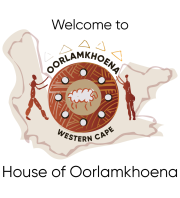About
Our Story
About Oorlamkhoena Tribe
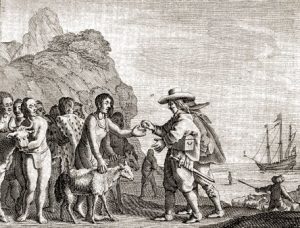 Where can we begin?
Where can we begin?
It is important to note that the history of the Khoi and San was intentionally and deliberately removed and distorted, with concerted efforts made by the British Colonialists and the Dutch to ensure that it does not surface throughout history. It was a total onslaught from all angles: legislative bannings, language division and appropriation, territorial separation and annexing, mutilation of our tribe members, spreading false information, withholding and destruction of critical records.
The Khoi and San people had to retrieve and reconstruct their histories, through the hearses (oral recollection) substantiated by written historic colonialist recordings and anthropological research of the generations of fathers and mothers, some who were still around to tell the story.
Today, in a world where written content can so easily be verified through online searches – authenticating a story instantly – here we come along, in an attempt to retell the history – the masterminds had centuries to orchestrate its removal and absence from history.
From 1 April 2021, the Khoisan Act came into effect; granting the Khoi and San acknowledgment as a traditional community/kingdom; subject to being required to verifying their existence as an authentic tribe/kingdom, through either royal lineage or authorization by its people – we have two year within which to do that. Two forms of verification from the Cape Khoi “Coloureds” people, whom number 1; who’s lineage were bastardised through the Europeans and Boer Afrikaners and, number 2: were prevented from being a ‘nation’ through, just to mention one controversial past, “farm slavery with the “dopstelsel” (formenting alcohol dependancy to avoid monetary remuneration), which resulted in the very alcohol, drug ridden coloured societies we have today – ask them to appoint their ‘chief or king’ within 2 years.
Currently the South African Government’s processes is obscured by the lack of historic available information of our history, caused by the deliberate obliteration of our history. This is further plagued by the various interest groups which the current Government is attempting to appease. Our Khoi leaders, businesspeople, and stalwarts therefor have a duty to stand up and take control of our future by reclaiming the history of the Khoi and the San who is the Frist Nation of South Africa – regaining our rightful place in this South Africa of ours.
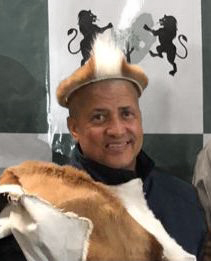 A Chief stands up
A Chief stands up
Hyram Demitri Doolings was born in 1961, in Cape Town, during South Africa’s apartheid era and was racially classified as coloured. He still lives in Cape town, with four beautiful daughters (Simone, Tarryn, Alexis and Kayla) who was born of his marriage with Lolitta Grace Doolings. Whilst at school at the age of 12 he was knocked down by a car and suffered numerous injuries. He was attended to by a first aider, who worked for the South African Red Cross Society. This event instilled in him desire to serve his community of which the first step was to become a first aider. He later joined the South African Red Cross Society and served 12 years as a volunteer for the South African Red Cross Society where he performed over a million minutes in first aid.
The linkage
He recalls that at the age of nine he started interacting regularly with his uncle, Frederick Stuurman, who was married to Eileen Stuurman. 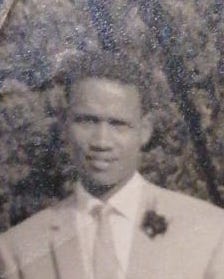 Uncle Frederick Stuurman, who was a direct descendant of Dawid Stuurman. During his frequent discussions and interactions, Uncle Frederick shared with him the history and significant role that Dawid Stuurman played in the struggles of the Khoi and San Nation. During this period the burden of leadership was placed on his shoulders. Dawid Stuurman has a deep rooted connection to the history of the Khoi and he will for ever be remembered as being imprisoned thrice on Robben Island and successfully escaped from the Island.
Uncle Frederick Stuurman, who was a direct descendant of Dawid Stuurman. During his frequent discussions and interactions, Uncle Frederick shared with him the history and significant role that Dawid Stuurman played in the struggles of the Khoi and San Nation. During this period the burden of leadership was placed on his shoulders. Dawid Stuurman has a deep rooted connection to the history of the Khoi and he will for ever be remembered as being imprisoned thrice on Robben Island and successfully escaped from the Island.
Initially a young Doolings did not understand why Uncle Frederick was so sad when he narrated the life story of his forefathers with specific reference to Dawid Stuurman. It is only in his later teenage years when at high school that the impact of what Uncle Frederick shared with him, dawned on him and he realised how his peoples inheritance was stolen which resulted in the impoverished coloured communities which we encounter today.
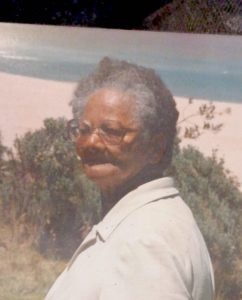 His grandmother Roseline Doolings was born in the Western Cape, Saldana St. Helena Bay. What an extraordinary woman. As a child getting home from school he ensured that he was the first one engaging with her while waiting for his lollipop. He sat with her talking for hours about her childhood and wanted to know about her mother and grandparents. One day whilst having his lollipop moment she told him about all the mix races where she comes from such as Nama.
His grandmother Roseline Doolings was born in the Western Cape, Saldana St. Helena Bay. What an extraordinary woman. As a child getting home from school he ensured that he was the first one engaging with her while waiting for his lollipop. He sat with her talking for hours about her childhood and wanted to know about her mother and grandparents. One day whilst having his lollipop moment she told him about all the mix races where she comes from such as Nama.
What she shared with me that particular day, she looked me in the eye and said, my child there is such a lot of things that happened in this South Africa that we live in. Also before Jan Van Riebeeck landed here it was known as the state of Cammisa. The colonist came and made such a lot of changes. She told me how her ancestors were murdered in various circumstances. One of the various incidence was when Jan Van Riebeeck tied up the men and drown then in the cold waters of the Atlantic Ocean.
She could talk about how we became a mixed race. Also sum of the various slaves that came to the Cape OF Goodhope how they came together as a tribe. The Punishment that they went through and also the method that they endured in ending up being thrown into a furnace. This all happened in the Cape Colony. Also what happened how they were used as animals grinding the mills. One of the very significant stories that she told was the cross pollination of the various plants that you only find in the most Southern tip of Africa. This happened when our people use to eat the carrots of various species of plants and the end of that carrot got replanted. So that made our people great omnivores obtaining energy and nutrients from plants and hunting animals and therefore we could survive. Also we are great carnivores and herbivores.
When the Europeans came over on their vacation’s one of their sports was hunting wild life, for which they received a certificate. What was also on the certificate was for them to hunt us, shoot and killed us. The genocide that took place in the most Southern tip of Africa was well planned by the colonist.
We received the colonist people with wide open arms and our hand was always open to received them. However, they took advantage of our openness and our goodness that we extended to them. We traded and shared our cattle and livestock with them. Later on they divided our livestock into camps and we could not understand why they did that. Access to our livestock was then prohibited and we ended up being thrown in jail. That is how they took advantage of our hospitality. We the Oorlam people were also herd people being driven out of the Cape Colony and at the same time looking for greener pastures for our herds. Other history talks about “The Groot Trek” but we the Oorlam was The Groot Trek. My People moved from the Cape Colony Right up till in Namibia as it is known today.
One of the most horrific stories told by her, was of an indignant happening that took place on a plane in the Cape Colony opposite The Groote Kerk – our woman were paraded on the square as prostitutes. The so called whore house was opposite The Groote Kerk. The Colonist could come and just purchase any of our woman to sleep with. Lots of recorded documents is hidden in that church.
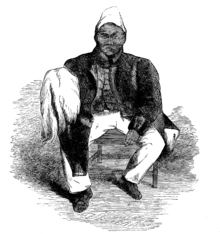 Jonker Afrinaker
Jonker Afrinaker
Jonker Afrikaner was a notable 19th-century leader of the Orlam people, a subgroup of the Khoekhoe, in what is now Namibia. Born around 1785, he was part of the Afrikaner clan, a prominent group in Southern Africa. His father, Jager Afrikaner, was the first leader of the Afrikaners who had a reputation for raids against European settlers and local tribes. After Jager’s death, Jonker took over the leadership.
Jonker was significant for his military and political leadership during a time of great upheaval in Southern Africa. He migrated with his people northward
from the Cape Colony, eventually settling in central Namibia around Windhoek. There, he established dominance over local tribes like the Herero, leveraging his people’s firearms and European military tactics. Jonker formed alliances with European missionaries and traders but also maintained his independence.
He established Windhoek as a power base, and his leadership solidified the Afrikaners’ influence in the region. Jonker Afrikaner was known for his strategic use of diplomacy and force, shaping the political landscape in Namibia. His influence waned after his death in 1861, but his legacy is tied to the establishment of Afrikaner leadership in the region and the early development of Windhoek as a political center.
His leadership represents the complex dynamics between indigenous African groups and European settlers in the 19th century.
The Oorlam People: A Breakaway Sub-Tribe
The Oorlam people, originally a part of the Nama group, split off in the early 19th century, around 1830. This split was driven by different ideologies and needs. While the Nama were more conservative in maintaining their traditional ways, the Oorlam, under leaders like Jonker Afrikaner, took a more adaptive approach. They integrated various influences and people, including those from outside the Nama community, into their ranks.
The Oorlam, unlike the Nama, were more willing to integrate diverse groups into their society, which allowed them to grow in strength and numbers. They embraced a blend of cultures, incorporating European firearms and horses into their nomadic lifestyle, making them a formidable force in the region.
Migration from Cape Colony to Namibia
The Oorlam’s journey began in the Cape Colony, in what is now South Africa. Over time, they migrated towards the West Coast and settled in various parts of modern-day South Africa, including:
- Saldanha Bay
- Vredenberg
- St. Helena Bay
- Alexander Bay
While some Oorlam stayed in these regions, others continued moving northward, eventually reaching South West Africa, known today as Namibia. Their most significant settlement in Namibia was Windhoek, where Jonker Afrikaner established a base.
Establishing Power in Namibia
By the time they settled in Windhoek, the Oorlam had developed into a strong and influential group. Jonker Afrikaner, the key leader, used strategic alliances and military prowess to consolidate Oorlam influence over the surrounding peoples, including the Nama and Herero. Their ability to adapt to new environments and adopt military tactics, including the use of firearms, set them apart from other groups.
The two maps provided show the colonial divisions of Southern Africa (1884-1905) and the ethnic distributions in pre-colonial times. The Oorlam’s migration from the Cape Colony to South West Africa (Namibia) reflects their journey through shifting political and geographical landscapes, navigating between German, British, and Portuguese-controlled territories.
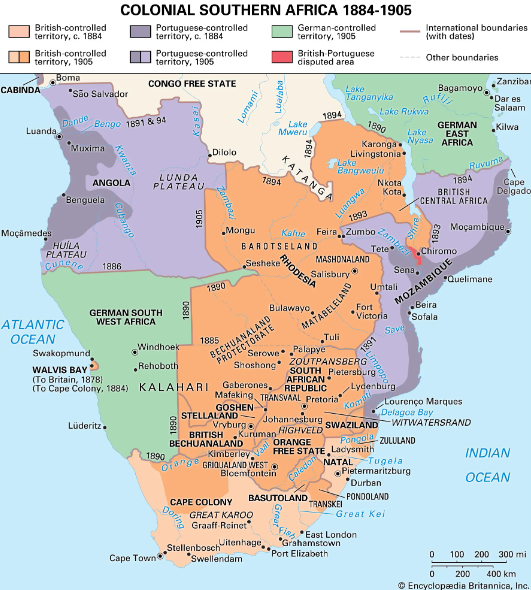
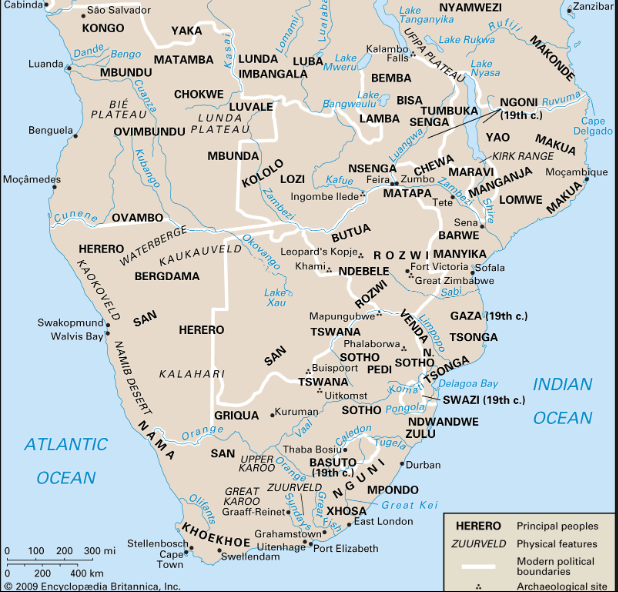
Take charge and let our people know
Just before my grandmother died she said Hyram Boesman Demitri, I know you went into business to help our people but you must start where your forefathers left off. The prayers of your forefathers should never be in vain. She also said now that you know about our rich history and we are related to the Stuurman clan make it so much easier to continue the struggle.
This part of our history is very sensitive but it needs to be told. Jager Afrikaner, son of Jonker Afrikaner had an affair with my great, great, great grandmother and bore a child in secrecy and was raised outside of the Afrikaner clan. Being raised outside the clan and not feeling part of the Oorlam Tribe was a very sore point in my life. What I do realize that I was always part of the linage of the Oorlam Tribe.
Growing up as a child I hated the fact that I was called the Boesman in the family. Later in life it became clearer why I was called that. I want to state this emphatically “My people have been asphyxiated for many, many years and it is time to remove the foreign objects that has caused our asphyxiation”.
I swore to my grandmother that I will ensure to take our rightful place in history. For the last 4 – 5 years I’ve decided to prepared myself for what I have promised my grandmother. After attending several summits I then approached HRH Gaod Jeremy Saffier regarding my history. In the year of September 2020 I was traditionally and religiously sworn in as Paramount Chief of the Oorlamkhoena Tribe and the various tribal leaders that was present at the summit. Hence we have signed an Alliance MOU with the Baxhidixhoi Kingdom. The Oorlamkhoena Tribe is forming strong relationships with various tribes in the Western Cape.
As far as my knowledge and research is concerned that throughout the 19th and 20th century, the Stuurman clan was prevalent with in the Cape colony and that they are direct descendants of our Khoi hero David Stuurman. So that means that my uncle Frederick Stuurman comes from that clan and that Paramount Chief Hyram Doolings is related to another clan.
Toa Tama !khams ge (the struggle continues).
The Oorlam people: https://en.wikipedia.org/wiki/Oorlam_people
